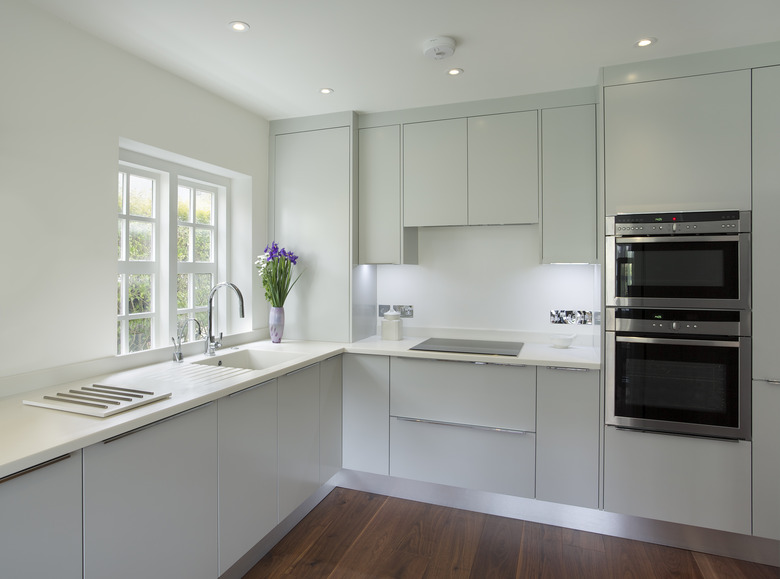How Many Smoke Detectors Are Required By Law?
We may receive a commission on purchases made from links.
At a bare minimum, the National Fire Protection Association (NFPA) has long recommended placing smoke alarms inside and outside every sleeping room in the house as well as placing at least one on every level of the house. The NFPA doesn't make laws, however. That's up to state and local legislative bodies, and as far as states go, each one has its own laws regarding smoke alarms, some of which match the NFPA recommendations and some of which don't. You can find a state-by-state list of smoke alarm regulations at Universal Security Systems, Inc.
California follows the NFPA recommendations closely, requiring a smoke alarm in every bedroom, one in a hallway that adjoins one or more bedrooms, and at least one on every level of the house (including the basement). Arkansas, Michigan, Massachusetts, and many other states are not so specific, simply stating that smoke alarms are generally required in residential settings. Alaska state law is similarly vague, but it explicitly defers to local authorities, who may impose stricter requirements. Check with your state and local authorities for requirements that apply to your community.
Tip
State laws concerning the number and placement of smoke alarms vary, but the NFPA establishes clear guidelines that are applicable everywhere.
Check the Building Codes
Check the Building Codes
State laws may be vague about the number and placement of smoke alarms in a home, but building codes are often more specific and may incorporate regulations established by the state Fire Marshal. It's important to realize that building codes that regulate smoke alarms apply only to new construction and not to existing homes. They are enforced only when a homeowner applies for a building permit and has an inspection. That may give homeowners license to ignore applicable smoke alarm regulations in their existing home, but since the purpose of fire alarms is to keep you safe, that's usually a bad idea.
In the absence of clear guidance from state or local authorities, the safest plan is to follow the NFPA guidelines whether you're engaged in building or not. That way, you'll be sure to be in compliance with local and state regulations even if you're not sure what they are.
Required Number of Smoke Alarms
Required Number of Smoke Alarms
If you're engaged in a remodel, you're building a new house, or you just want to make your existing house safer and you want to be in compliance with NFPA guidelines, you'll put one smoke alarm in each bedroom and one in the hallway outside. If a hallway adjoins more than one bedroom, a single smoke alarm is sufficient. You'll also have at least one smoke alarm on each level of the house, and if the house is big, you may need more than that, although no law specifies how many.
For example, if the main story of a house is divided into separate rooms, it's prudent to put a smoke alarm in each room. In a home with an open floor plan, one alarm placed in the largest room may suffice, but the NFPA recommends placing a second one near the stairway leading to the upper level. Smoke rises, so mount the alarms high — no more than 12 inches from the ceiling — and keep them at least 10 feet from cooking areas to avoid false alarms.
Other Important Smoke Alarm Requirements
Other Important Smoke Alarm Requirements
Smoke alarms have sensors that work by ionization, which detects flaming fires, or by the photoelectric effect, which detects smoldering fires. Dual-function smoke alarms incorporate both types of sensors, and some states, such as Massachusetts, require them in all new construction.
The NFPA recommends hardwired smoke alarms that are interconnected so that if one alarm sounds, they all sound. Even though they are safer, most states don't require these and allow the use of smoke alarms that have a battery as the sole power source. However, California and other states require the battery to be sealed, which means when the battery dies after its expected life of 10 years, you have to replace the entire smoke alarm. Manufacturers have responded to the growing number of states establishing this requirement by increasingly marketing sealed smoke alarms.
